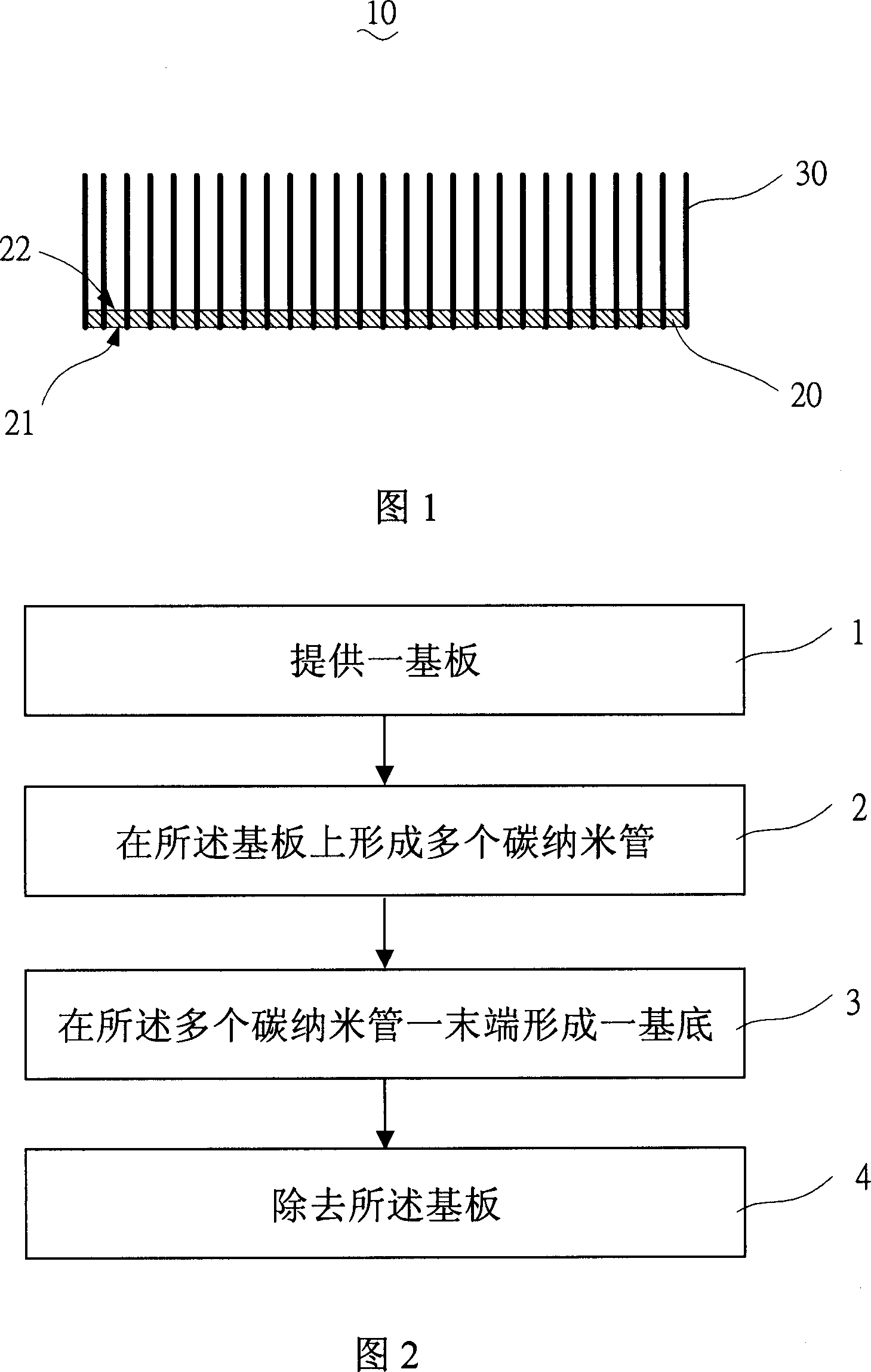Radiator
A heat sink and carbon nanotube technology, applied in the field of heat transfer, can solve problems affecting the performance of the central processing unit
- Summary
- Abstract
- Description
- Claims
- Application Information
AI Technical Summary
Problems solved by technology
Method used
Image
Examples
Embodiment Construction
[0014] The present invention will be described in further detail below in conjunction with the accompanying drawings.
[0015] Referring to Fig. 1, the radiator 10 provided by the embodiment of the present invention includes: a base 20 having a first surface 21 and a second surface 22 opposite to the first surface 21; a plurality of Carbon nanotubes 30 , the plurality of carbon nanotubes 30 extend outward from the first surface 21 of the substrate 20 through the second surface 22 .
[0016] The substrate 20 can be selected from a polymer material, such as one of polymer materials such as silicone rubber, polyester, polyvinyl chloride, polyvinyl alcohol, polyethylene, polypropylene, epoxy resin, polyoxymethylene, and polyacetal. species or a mixture of several. The thickness of the substrate 20 should not be too thick, nor should it be too thin. Too thick is not conducive to heat dissipation, and too thin will reduce its holding force on the carbon nanotubes 30, causing the ca...
PUM
| Property | Measurement | Unit |
|---|---|---|
| height | aaaaa | aaaaa |
| thickness | aaaaa | aaaaa |
| height | aaaaa | aaaaa |
Abstract
Description
Claims
Application Information
 Login to View More
Login to View More - R&D
- Intellectual Property
- Life Sciences
- Materials
- Tech Scout
- Unparalleled Data Quality
- Higher Quality Content
- 60% Fewer Hallucinations
Browse by: Latest US Patents, China's latest patents, Technical Efficacy Thesaurus, Application Domain, Technology Topic, Popular Technical Reports.
© 2025 PatSnap. All rights reserved.Legal|Privacy policy|Modern Slavery Act Transparency Statement|Sitemap|About US| Contact US: help@patsnap.com


